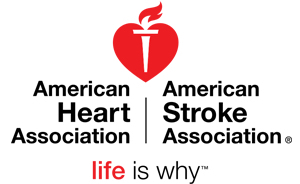 May is American Stroke Month and the American Stroke Association wants you to know that you don’t need superpowers to be a hero when it comes to stroke, you just need to pay attention to the risk factors and know the warning signs.
May is American Stroke Month and the American Stroke Association wants you to know that you don’t need superpowers to be a hero when it comes to stroke, you just need to pay attention to the risk factors and know the warning signs.
“Stroke is largely preventable and treatable,” said Ethan Gundeck, M.D., and American Heart Association/American Stroke Association Board President, “The best way to beat a stroke is to never have one – about 80 percent of strokes are preventable. The second best way to beat a stroke is to identify one immediately when it occurs and call 9-1-1.”
Hudson Valley resident Beverly Paige was only 52 years old when a weakened blood vessel in her brain ruptured, causing a hemorrhagic stroke. Paige had uncontrolled high blood pressure, headaches, and a family history of high blood pressure and stroke.
“I never thought it could happen to me,” she said, “I thought I was healthy.”
It was her teenage nephew, Aaron Smith, who quickly and correctly identified her symptoms of speech impairment and leg weakness as a stroke. He learned the signs in his high school health class. Her family’s quick action saved her life. Paige has since graduated college, with honors and is a volunteer Power to End Stroke Ambassador to help raise awareness for stroke.
The American Stroke Association’s Together to End Stroke initiative, nationally sponsored by Medtronic, shares five things everyone should know to be a Stroke Hero to stop the nation’s number five killer in its tracks:
1. Anyone Can Have a Stroke (Even Superheroes)
Some stroke patients don’t “look the part” and they may not have traditional stroke risk factors like high blood pressure. Stroke is more common in older people, but young adults, teens, children, babies and even the unborn can be victims.
2. High Blood Pressure is Public Enemy #1 for Stroke
About 80 million Americans have high blood pressure, yet about half with the condition do not have it under control. Three out of four people who have a first stroke report blood pressure higher than 140/90 mm Hg, making blood pressure the most important controllable risk factor for stroke.
3. Stroke Targets by Color
While stroke is a leading cause of death for all Americans, African-Americans are at an increased risk. Blacks are twice as likely to have a stroke compared to whites, and are more likely to have a stroke at a younger age.
4. Stroke is Largely Treatable
Clot-busting drugs and medical devices like stent retrievers have made stroke largely treatable, but most patients need to get to an appropriate hospital to be evaluated and treated within 3 to 4.5 hours of the first symptom. With nearly 2 million brain cells dying every minute during a stroke, there’s no time to phone a friend, take a nap, or wait until Uber stops surging. Calling 911 is the best call for stroke.
5. Friends Usually Save Friends from Stroke
You’ve heard the saying, “fast friends”. If you’re having a stroke, that’s exactly who you need nearby. Two out of three times, it’s a bystander making the decision to call 911 or seek treatment on behalf of someone suffering a stroke. To remember the most common stroke warning signs and what action to take, learn F.A.S.T. If you see F-Face drooping, A-Arm weakness or S-Speech difficulty, it’s T-Time to call 9-1-1 if any of these symptoms exist.
For more information about stroke and to learn how to be a Stroke Hero for American Stroke Month, visit www.StrokeAssociation.org.






